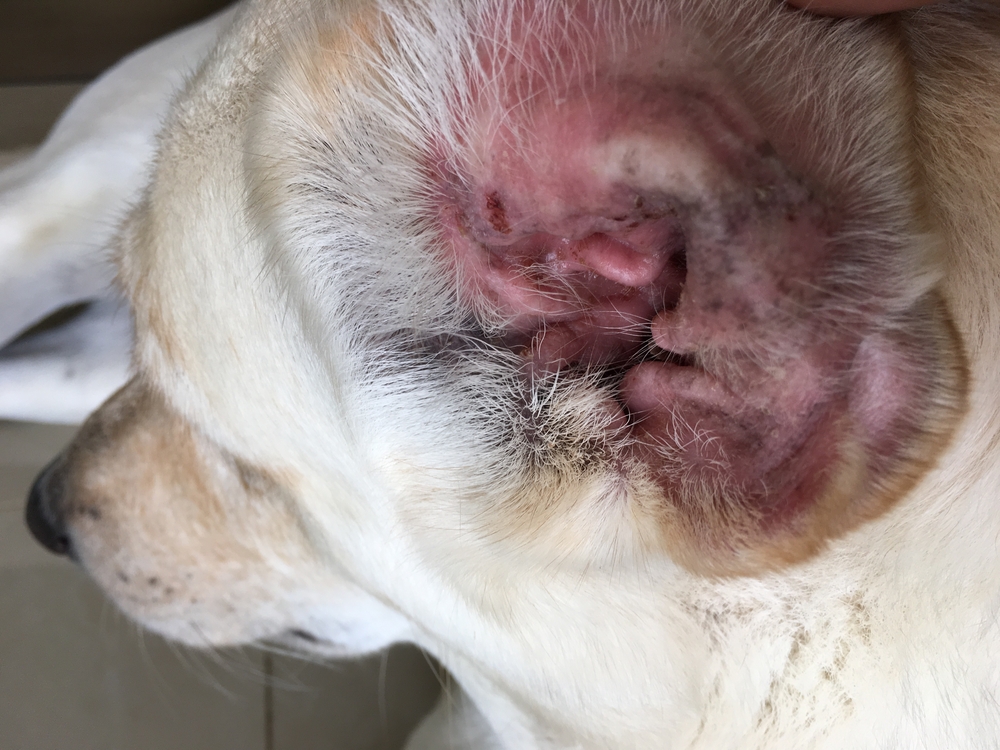While no pet owner wants to envision their pet in discomfort, pain is an unfortunate reality for pets and humans alike. And, since dogs and cats are stoic creatures, quantifying pain in pets can be difficult, but by understanding some of the common conditions in pets and how they cause pain, pet owners can be better equipped to recognize discomfort and to advocate for their four-legged companions.
Types of pain that pets experience
First, let’s learn about some different types of pain that pets may experience:
- Nociceptive pain — This type of pain occurs when tissue is injured or damaged, usually acutely after an injury such as a ligament rupture, or with an infection. You’ll likely notice inflammation signs, such as swelling, redness, or heat, indicating a healing response.
- Chronic pain — This is pain that persists for longer than expected and offers no biological value. Chronic pain accompanies many conditions such as osteoarthritis and cancer.
- Neuropathic pain — When the somatosensory system is damaged, neuropathic pain, which is difficult to treat, may result.
Common conditions that cause pain in pets
Here are some examples of common painful conditions that our pets may experience:
- Osteoarthritis — Joint inflammation, one of the most common conditions in dogs and cats, affects millions of pets every year. Age, breed, and preexisting musculoskeletal problems can put pets at risk for this debilitating, chronically painful problem, but arthritis can affect any vertebrate animal. Fortunately, pain management advancements now offer affected pets many options for alleviating osteoarthritis pain, including a variety of medications, and alternative therapies like laser, chiropractic, and acupuncture. However, some pets with osteoarthritis also have a neuropathic component, which can be difficult to treat. Osteoarthritis signs in pets may include difficulty rising or lying down, resisting exercise or going for walks, inability to jump into the car or onto furniture, limping, muscle wasting, or a general decline in activity level.
- Periodontal disease — Approximately two-thirds of all dogs and cats will have evidence of periodontal disease by age 3, making it a top diagnosis among our nation’s pet population. Most owners don’t regularly examine their pet’s mouth, and are shocked to see what is happening. Periodontal disease leads to painful gingivitis (i.e., gum inflammation), tartar accumulation beneath the gum line, bone loss, bleeding, and a whole host of other factors that contribute to oral pain. Since most pets will continue to eat despite the pain—they do need to eat, after all—dental disease often goes unnoticed until discovered by a veterinarian on examination. If the condition progresses without treatment, not only do pets experience significant pain, but also owners may be looking at costly tooth extraction and other oral treatments. The best way to treat pain associated with dental disease is prevention in the first place, so talk with the Tidmore Veterinary Hospital veterinary team about instituting an at-home oral hygiene regimen for your pet. In the meantime, monitor your pet for signs that may indicate oral pain, such as appetite changes, dropping food from the mouth, preferring to chew on one side, or resisting facial touches.

- Ear and skin infections — Pets, like people, are susceptible to allergens, although they tend to react differently. While people with allergies commonly present with itchy, watery eyes, and sneezing, pets often experience skin and ear irritation. As itching progresses, secondary infections can pop up, leading to pain and inflammation—if you’ve suffered from a skin or ear infection, you know that this experience can be unpleasant. Most pets exhibit clear signs such as skin or ear redness, red bumps or crusts on the skin, and varying degrees of itchiness. If your pet is itchy, you should schedule an appointment with our veterinary team. Addressing itching and allergies promptly can help minimize flare-ups and determine the underlying cause, which is key to preventing future signs.
- Cancer — Cancer is an unfortunate reality for many pets and, since virtually any body system can be affected, the signs can vary widely. Signs of osteosarcoma, a type of bone cancer, may mimic osteoarthritis or other musculoskeletal conditions. Advanced mast cell disease may present with painful, ulcerative skin tumors. Feline lymphoma may lead to painful abdominal tumors and a variety of gastrointestinal signs. Additionally, affected pets may experience pain associated with cancer treatment, such as effects from surgery, radiation, or chemotherapy. Fortunately, many pet cancers have excellent treatment plans, including pain control options. Monitor your pet for any of these signs that may indicate pain, as well as vocalizing (i.e., whining, whimpering, hissing, or growling), decreased social activity, weight loss, hiding, or restlessness.
At Tidmore Veterinary Hospital, your pet’s health and comfort are our top priority. If you aren’t sure whether your pet is in pain, don’t hesitate to contact our veterinary team for guidance.








Leave A Comment